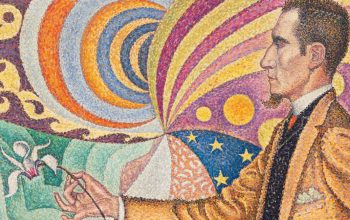A school provides students with a career path to learn the production of radio, television, and media personalities, which will prepare them for careers in broadcasting. And students will be committed to hands-on training in fully stocked radio and television facilities to be trained by broadcast experts. Also, students are well-equipped for an entry-level job in the broadcast sector after completing the course.
In deciding to follow your dreams of TV and radio broadcasting, there is more to learn about and experience in the media industry. A media school campus where students from Miami, Ohio, Illinois, and Colorado were able to get a successful start in a rewarding career in digital media.
What different types of radio media do they have?
The transmission of audio content through radio waves is known as broadcasting. It has the types of digital transmission used for delivering a wide range of content to the public. The media school campus has more radio options available to learn the various types of radio broadcasting, such as:
- Analog Radio
Analog radio has two primary categories, such as:
- AM means the amplitude modulation
- FM means the frequency modulation
Both AM and FM stations can very well supply all regions with all the transmission of audio signals to automobiles, homes, and portable receivers.
- Digital Radio
Find out more about the different standards for digital radio systems below:
- IBOC
The IBOC digital radio services used over the 2,000 AM and FM stations today operate in all HD stations to provide multicast services using the same broadcast channel are both old and modern receivers.
- DAB
The Digital Audio Broadcast DAB has developed with DAB+ and DAB-IP, which increases the DAB signal ranges in 40 countries and globally. DAB consists of various program services of quality and multiple effects, improved resistance to weather, noise, and others which listeners can broadcast with a given frequency band.
- ISDB-TSB
Digital radio system that developed in Japan in 2003 with multiple program services, such as the frequency of very high frequency of the band. Intermixing features of ISDB-TSB were exclusively broadcast on all TV channels and digital radio.
- DRM
It is a short-wave transmission system that primarily replaces AM international broadcasting in the short-wave band with a channel plan similar to analog services. Therefore an improved version of enhancement of two-channel that very high frequency of the band.
- Sirius XM
Sirius XM is a merger of two satellite radio services, such as XM Satellite and Sirius Radio, which broadcast over 150 digital audio channels that can receive, such as cars, portable, and other fixed receivers. These cover the entire continental United States, Canada, and other parts of Mexico.
- Internet Radio
Radio stations are using online streaming audio services in which listeners can stimulate broadcast in over-the-ai signals. The broadcaster may also give additional online audio streams that are regenerated, time-shifted, and on-air services. In addition, no bandwidth because broadcasters are distributing via the Internet and third-party telecommunications providers.
The Media School is open for 8-months of the hands-on technical training programs and also offers a variety of different kinds of programs such as:
- Digital Media Production
- Radio and TV Broadcasting
- Media Sales and Marketing
- Sports Broadcasting
- Audio Production
- Film and Video Production
- Hispanic Media Broadcasting



